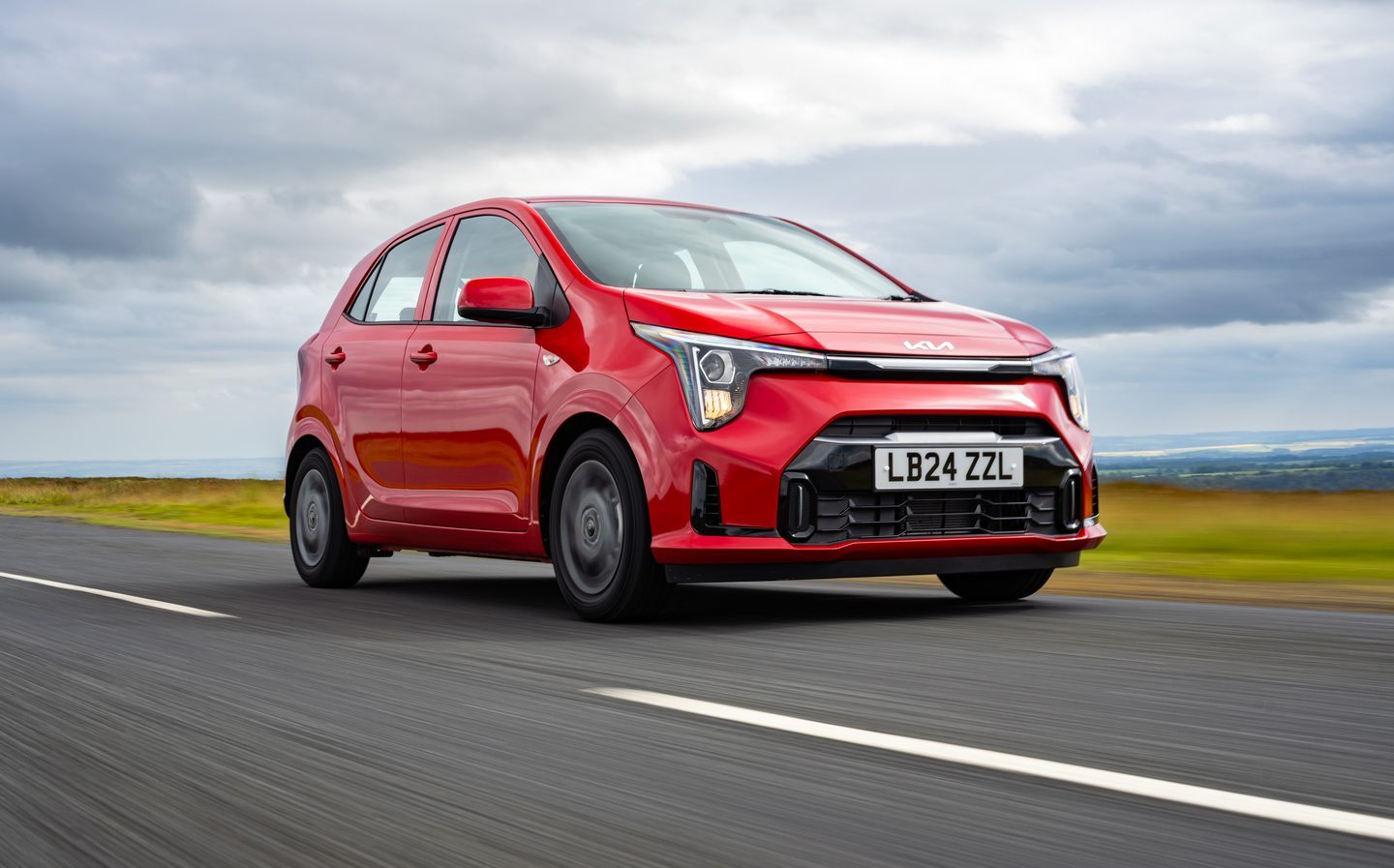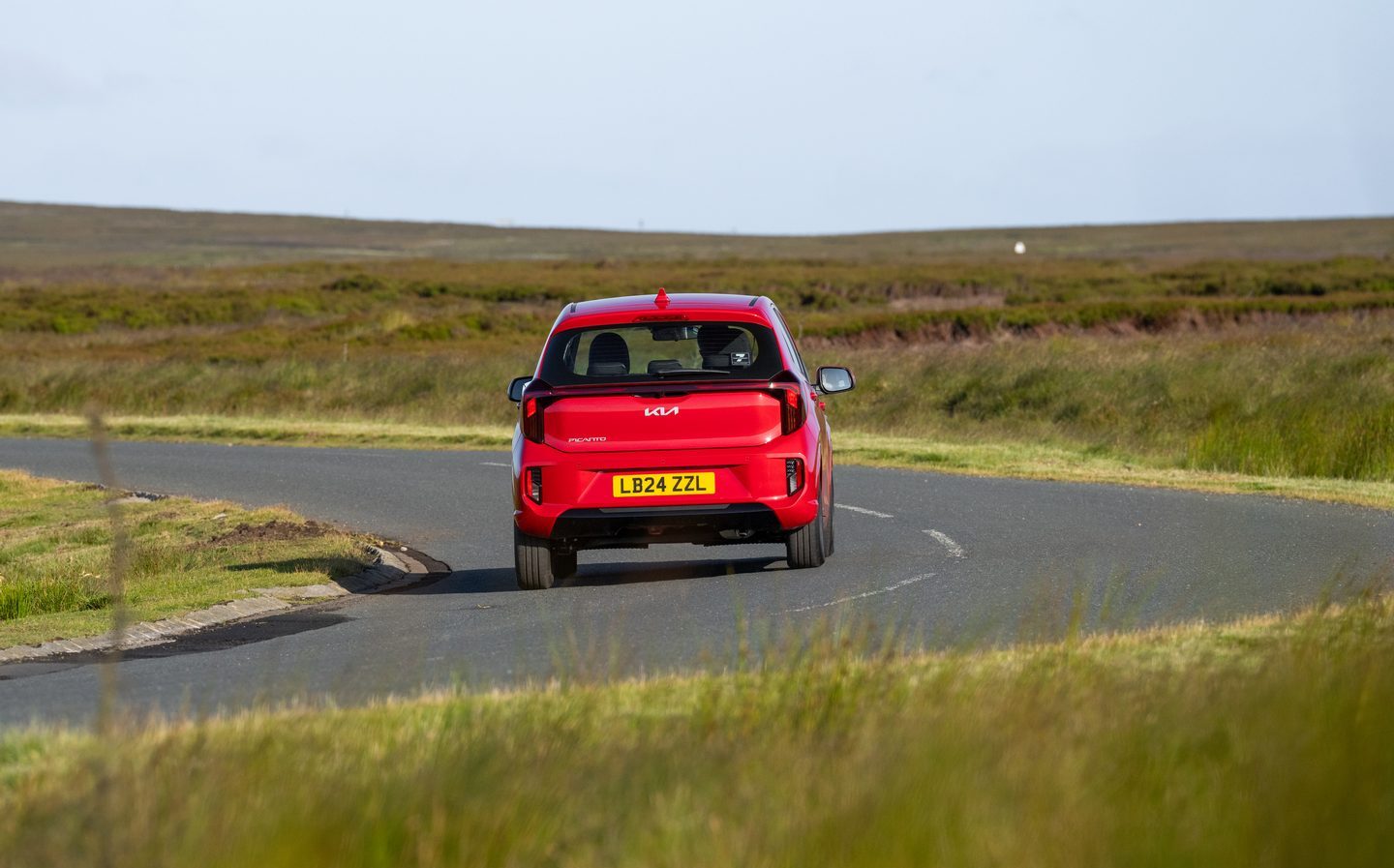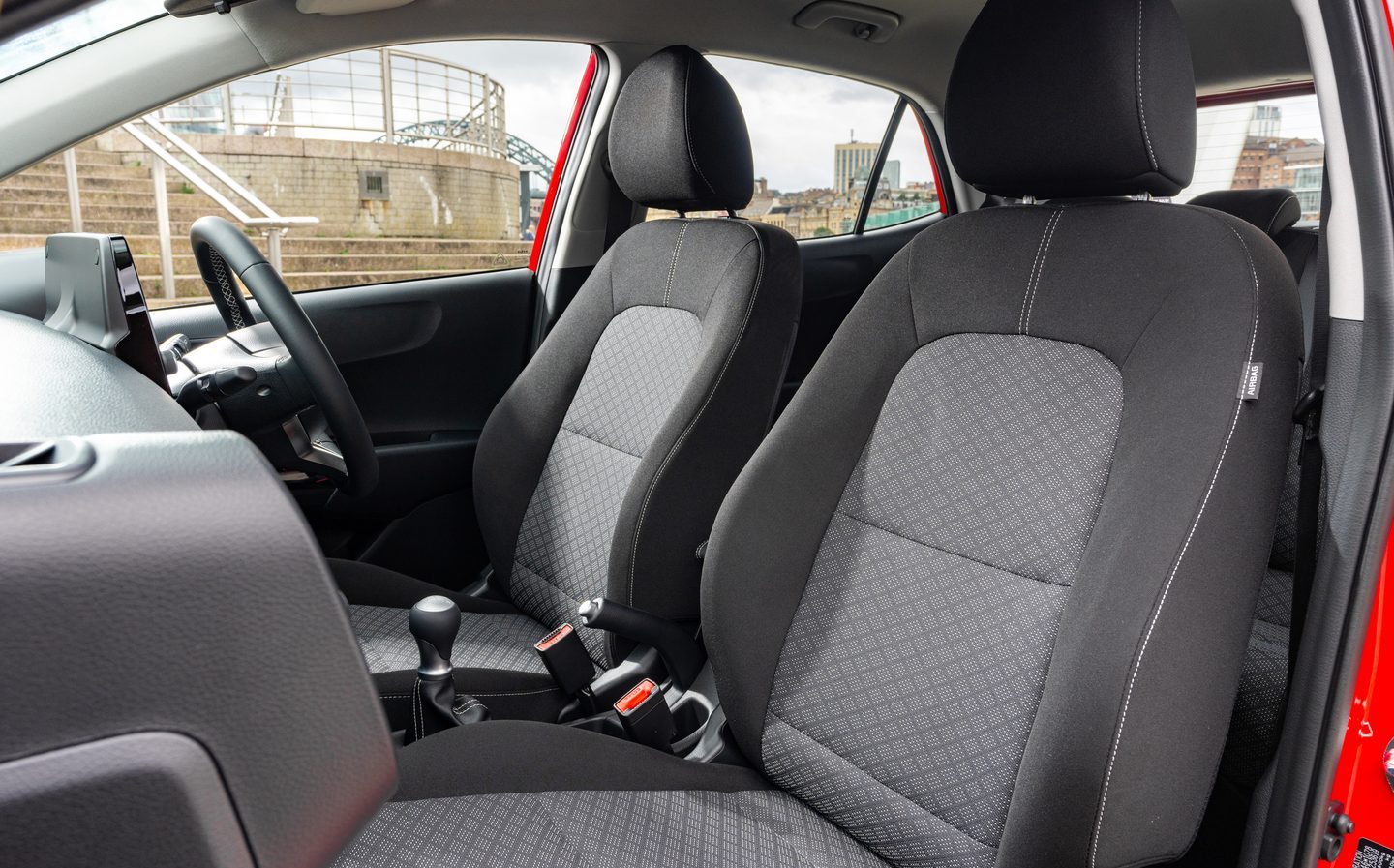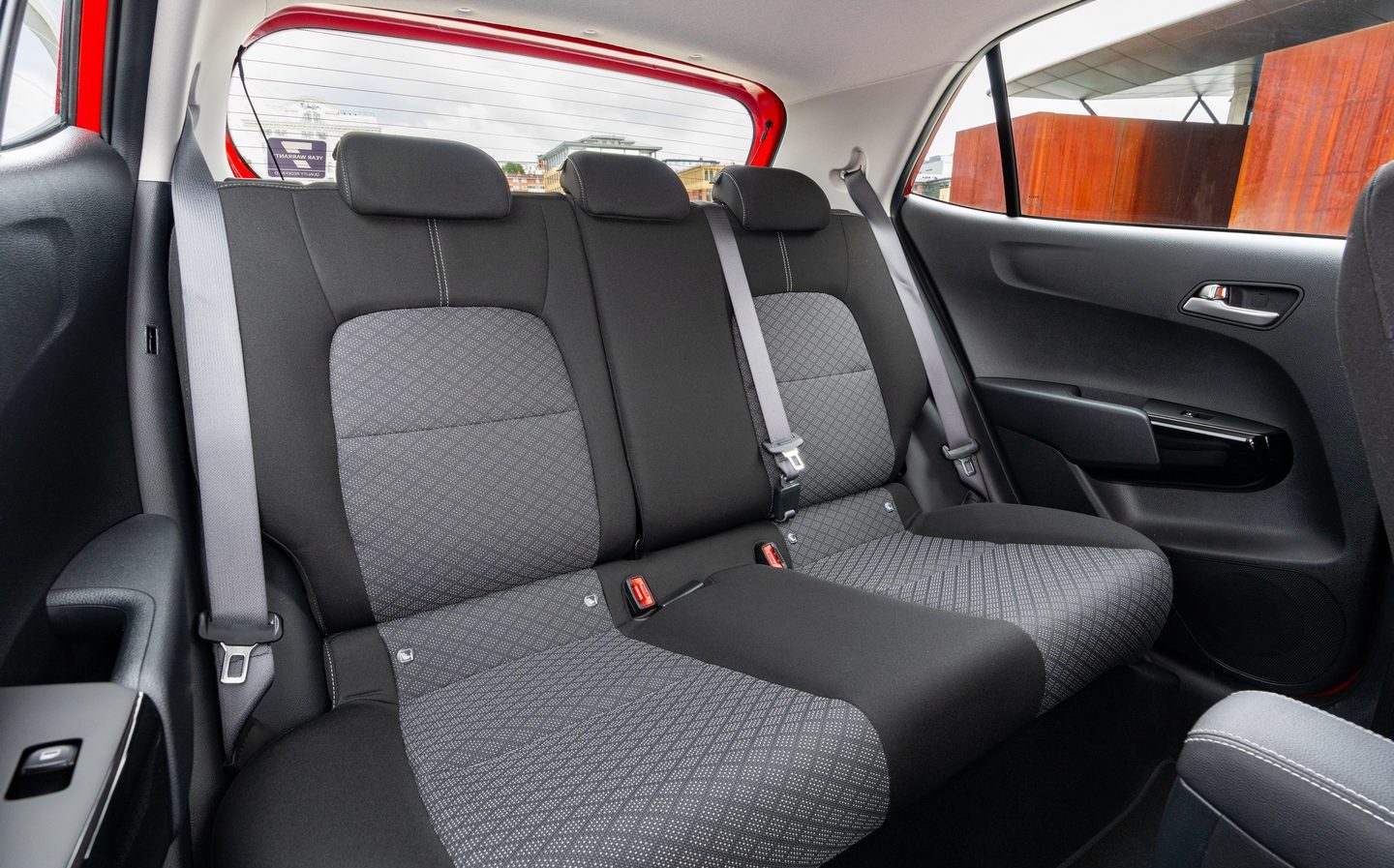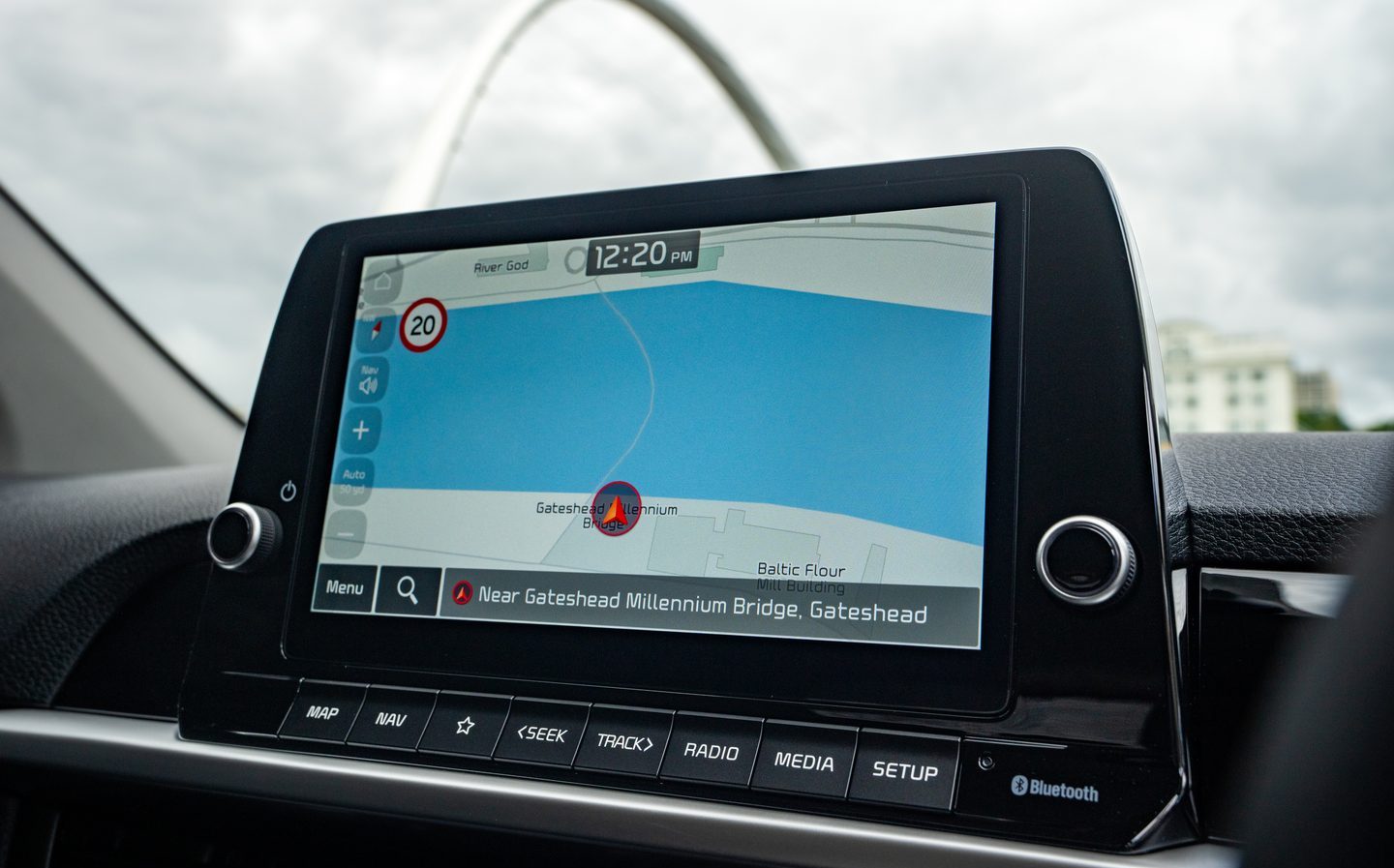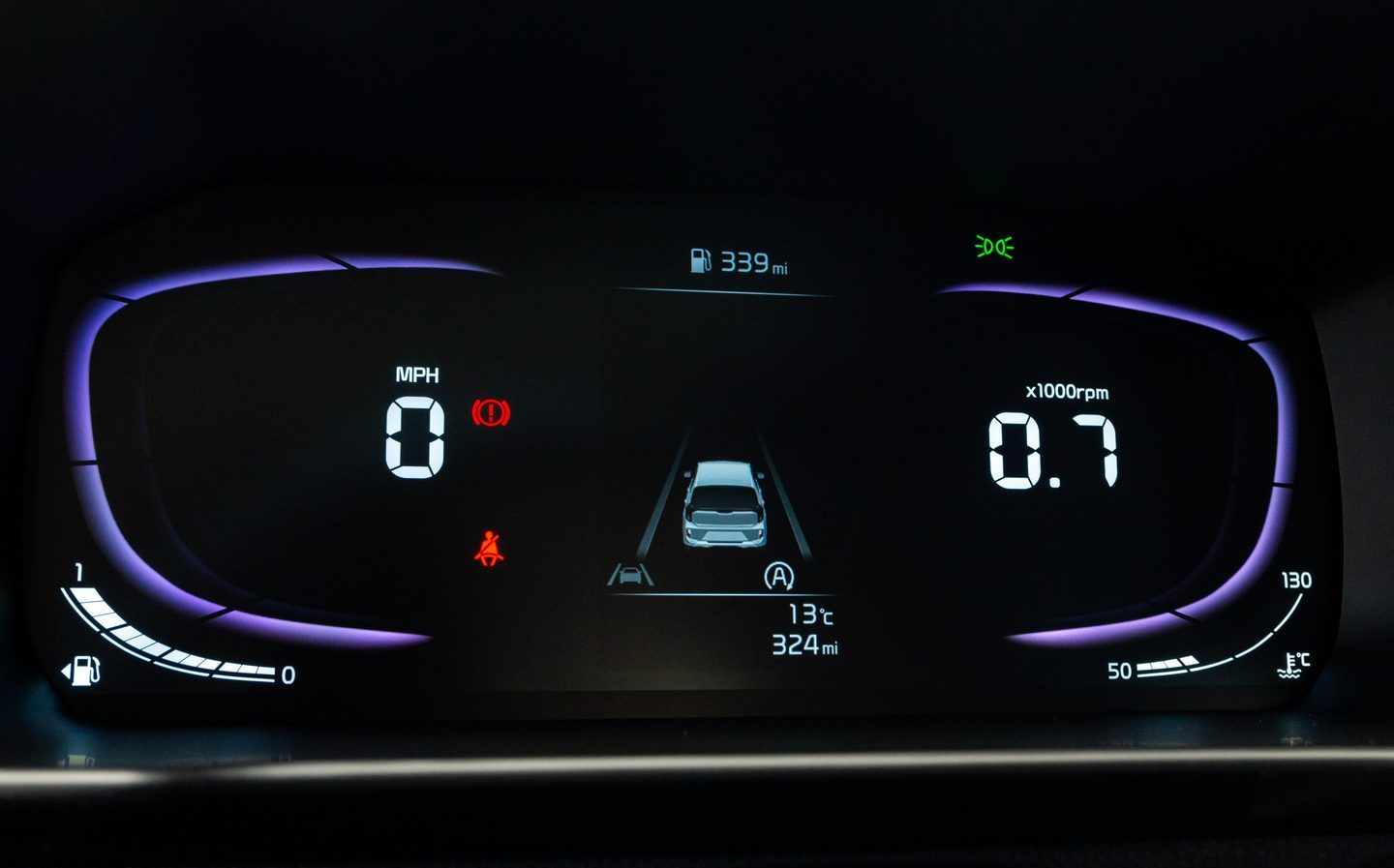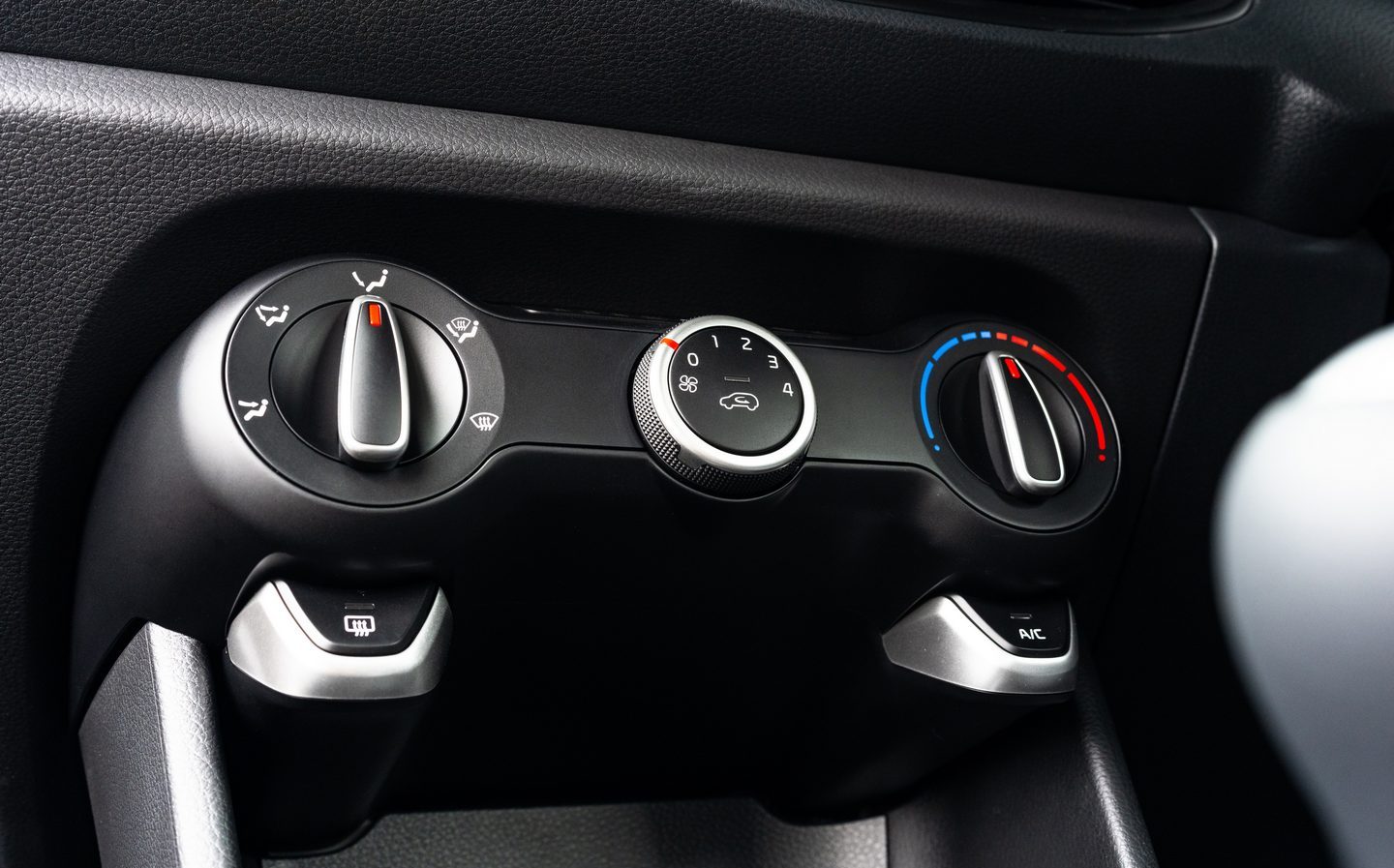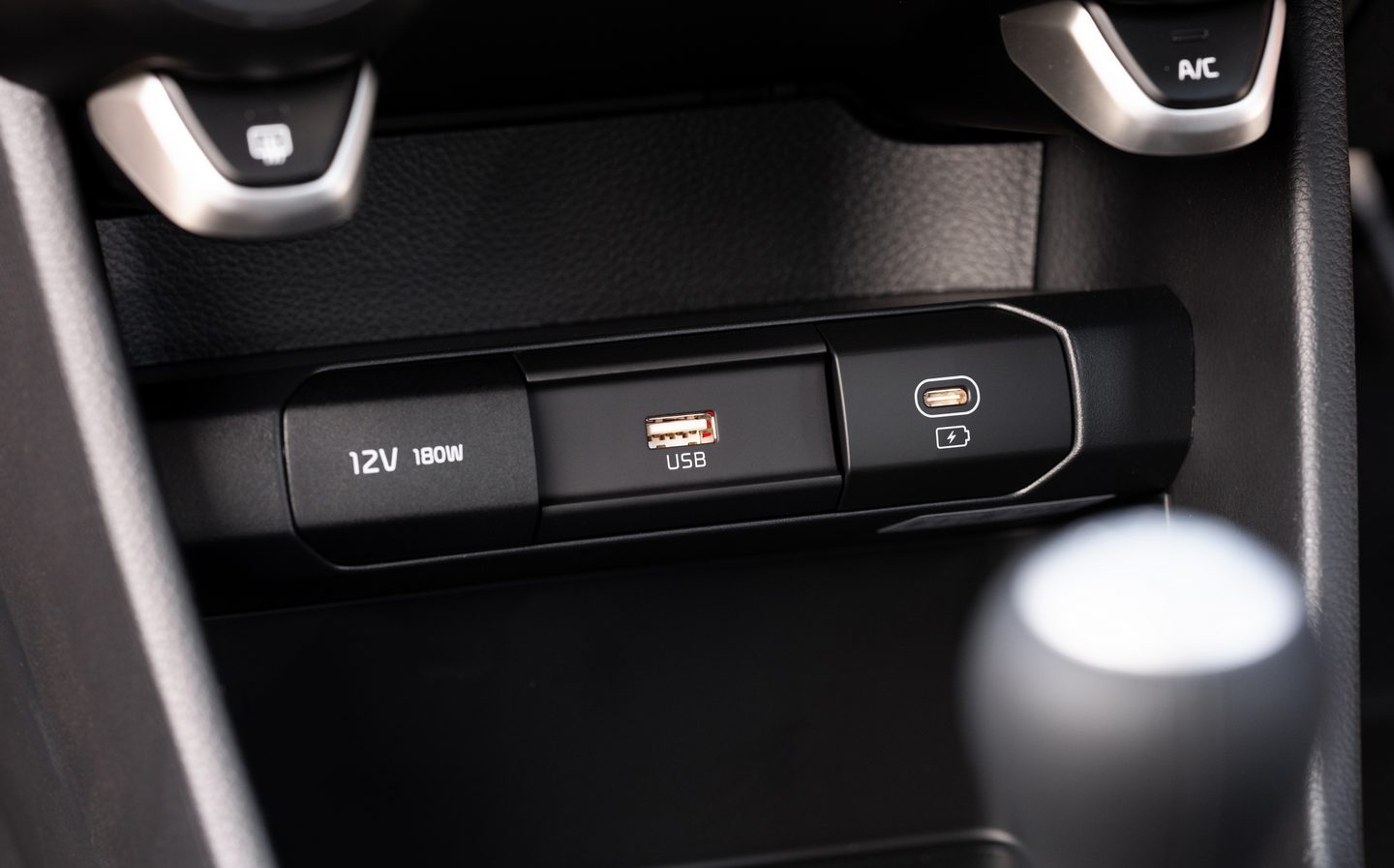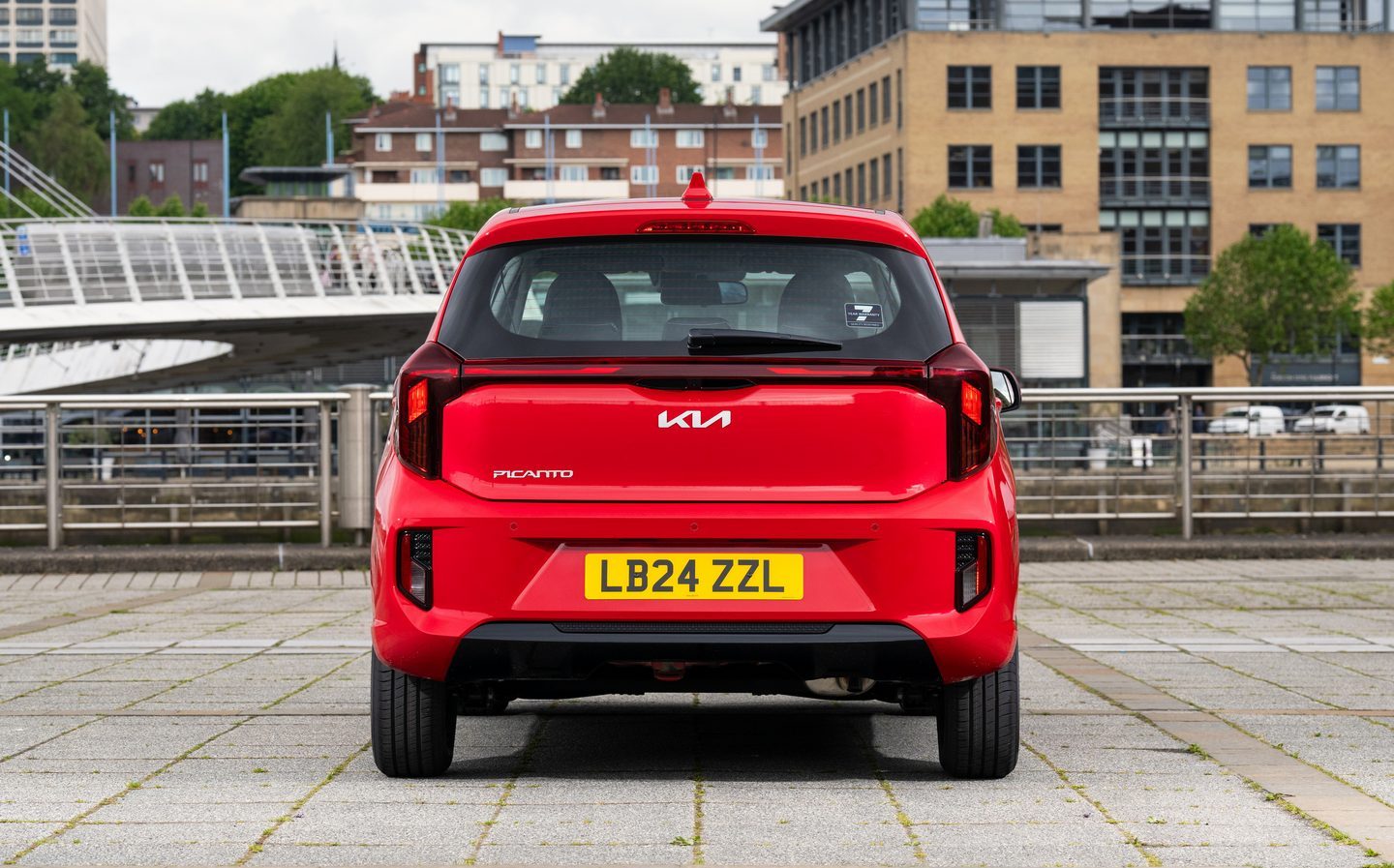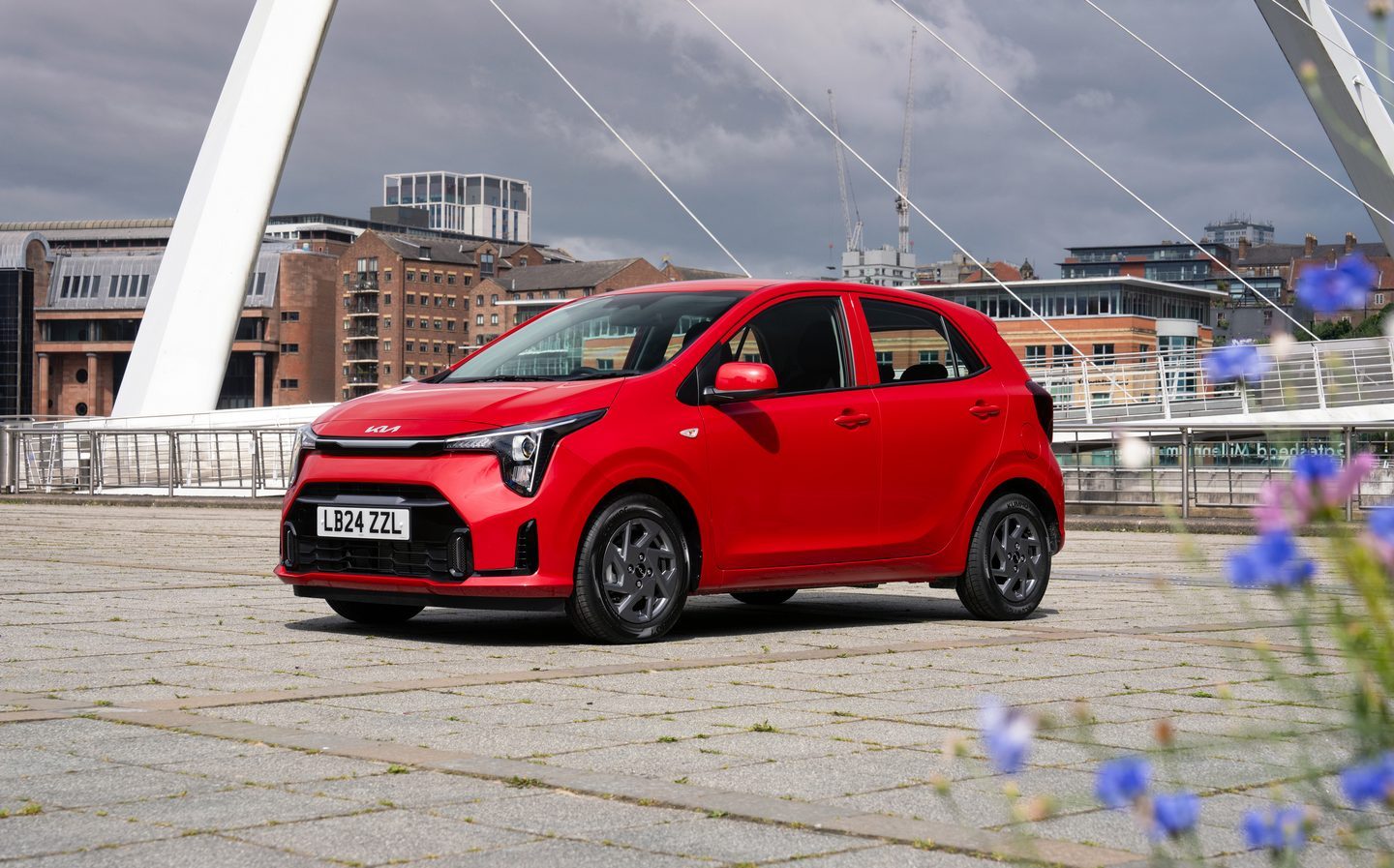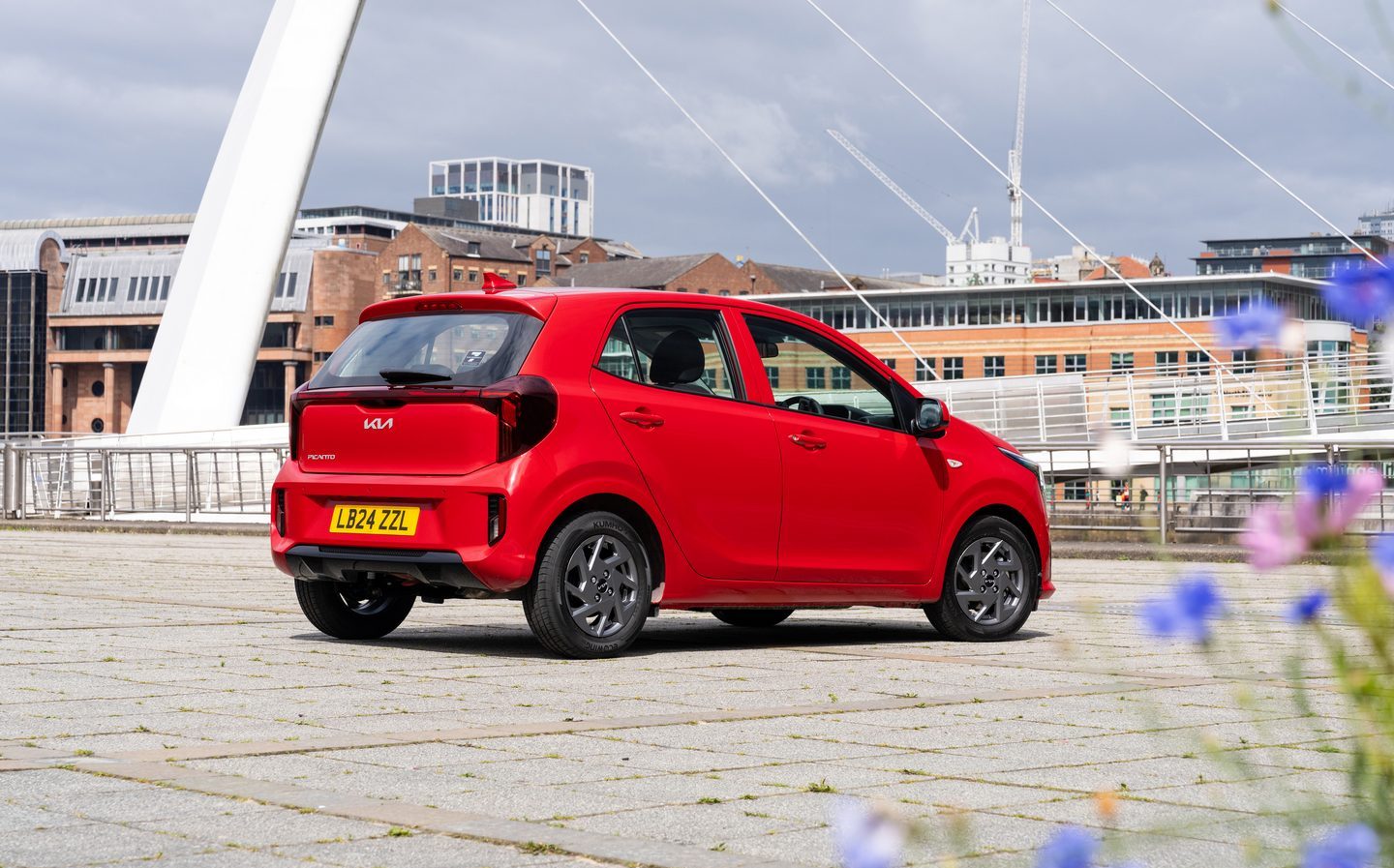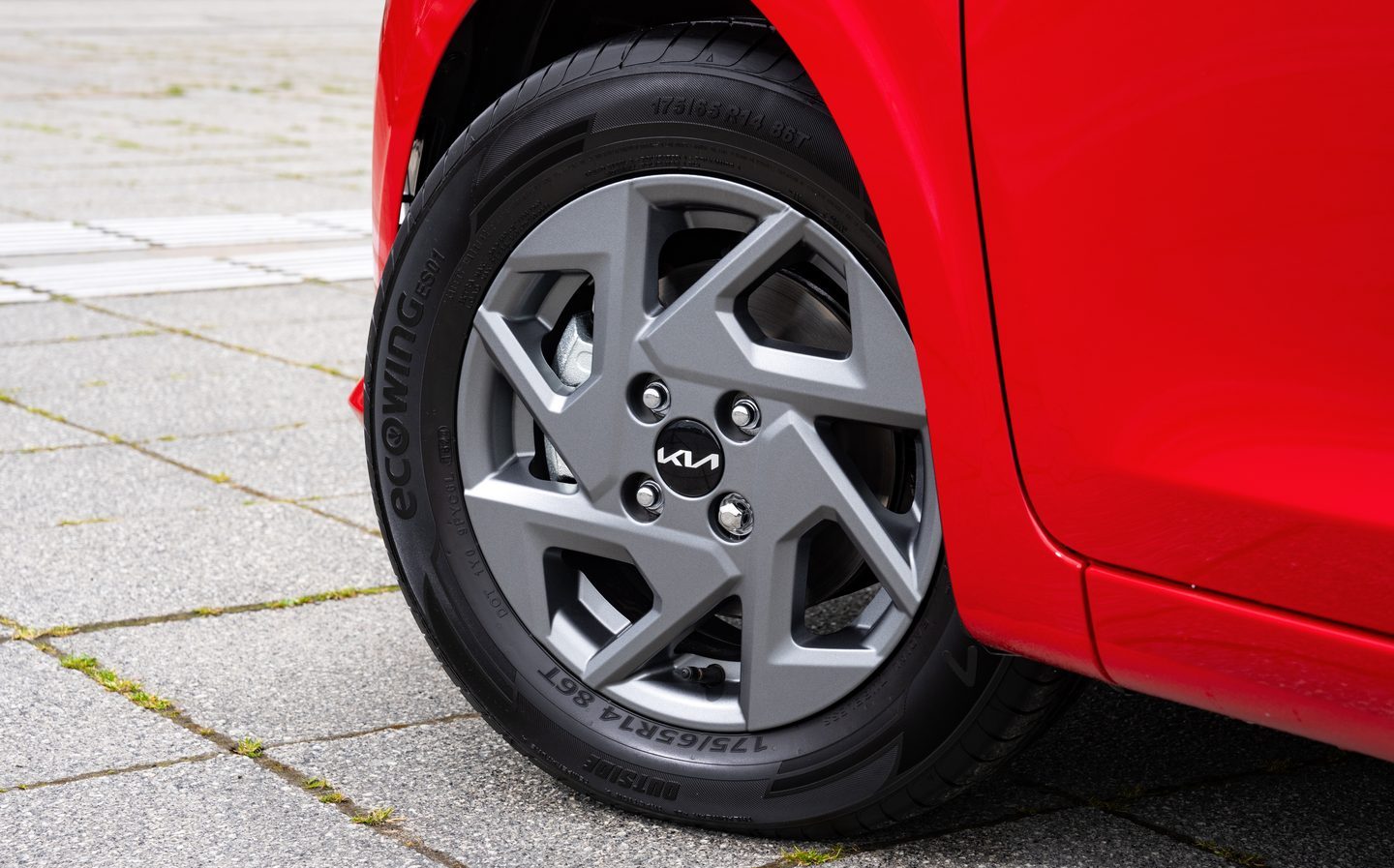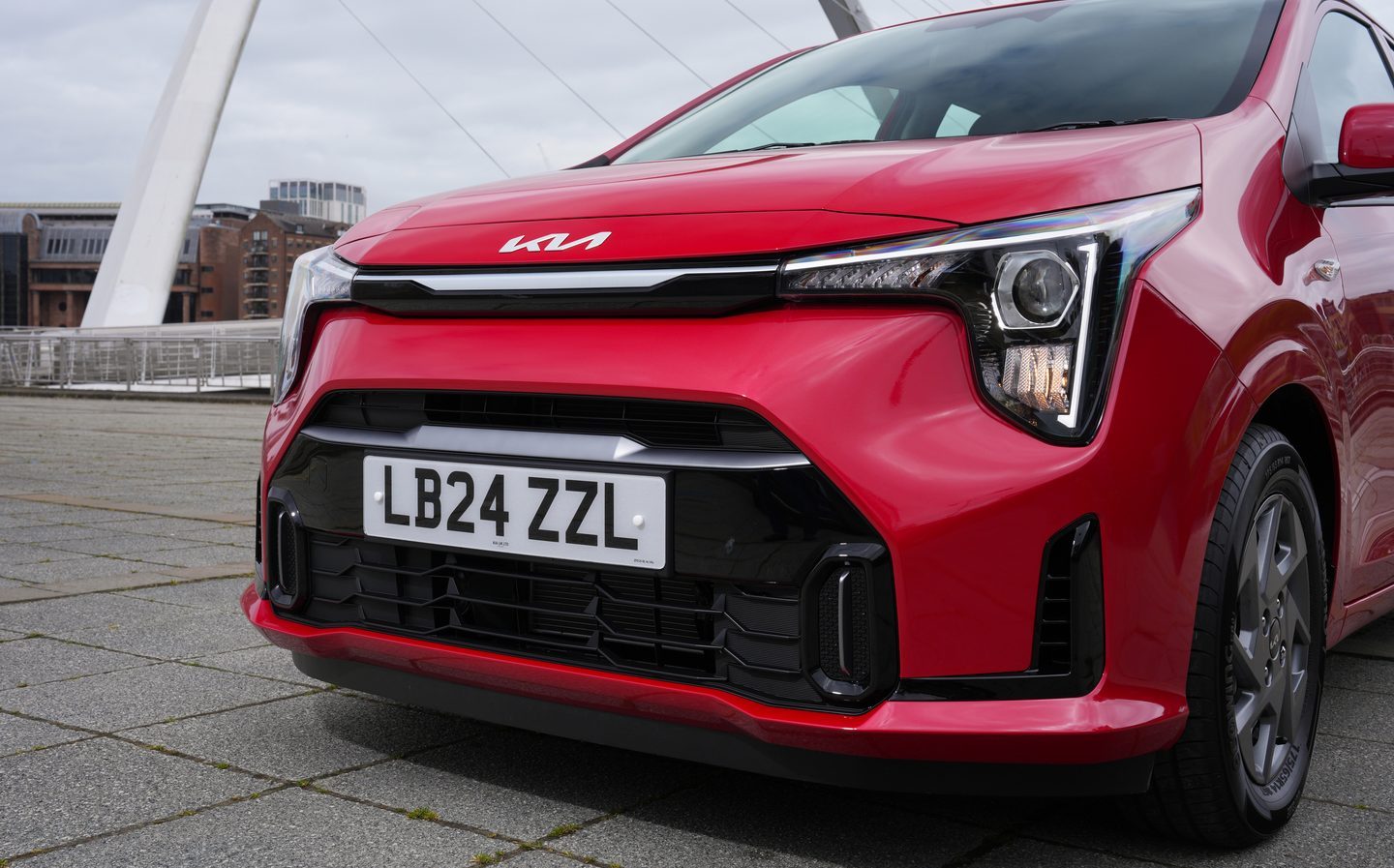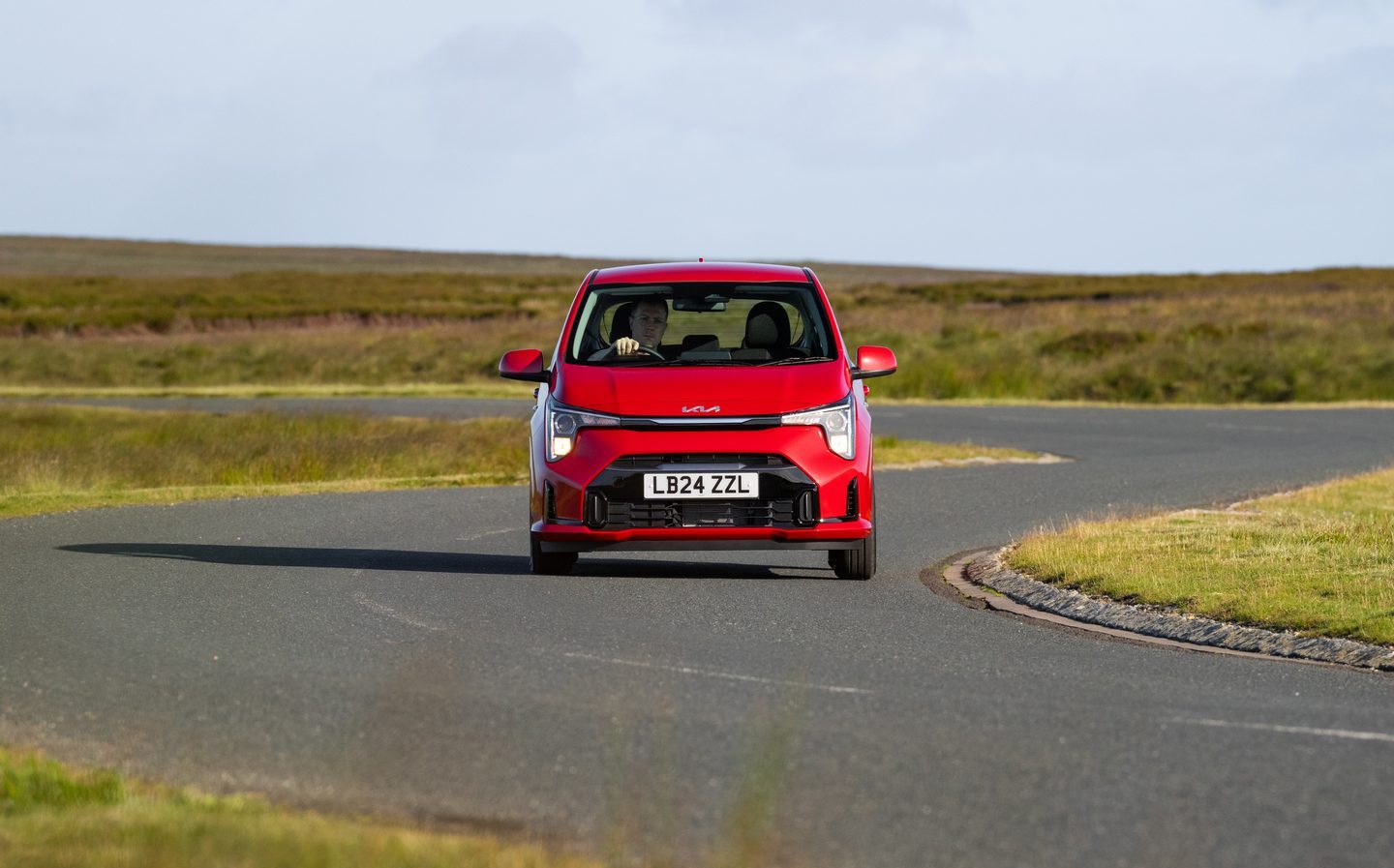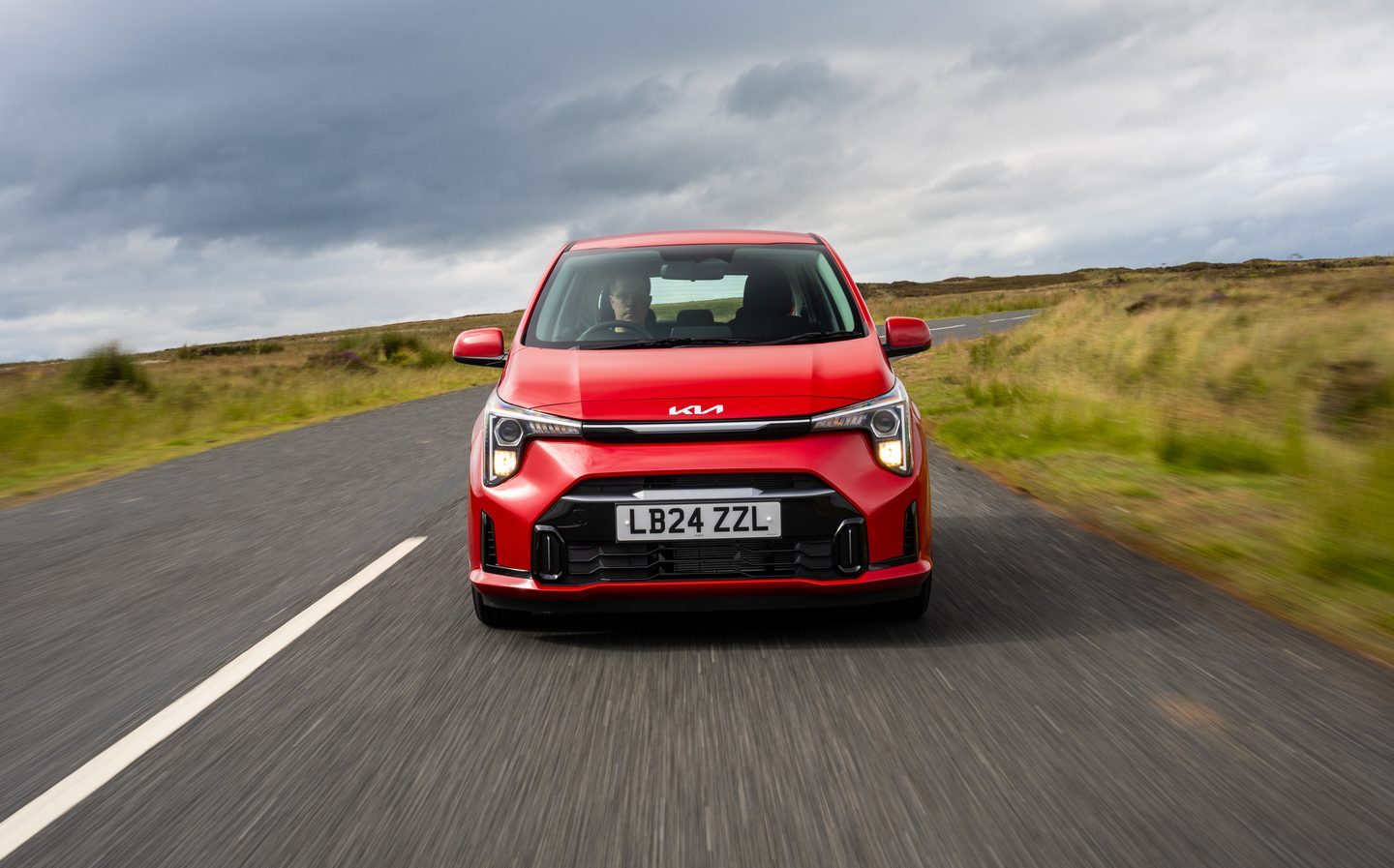Kia Picanto 2024 review: Updates add spice to cute Korean city car
Not as spicy as the name suggests, but not tasteless either
The modern world has not been kind to small cars. Where once the market was saturated with cute city runabouts that suited everyone from new drivers to not-so-new grandparents, the pressures of safety legislation, emissions and production costs have made it almost impossible for many car makers to make a profit from anything much smaller than a Polo. And some can’t even do that.
As a result, choice is now limited in this section of the market, with just a handful of car makers staying put. Economists would tell you the drop-off in competition will lead to a drop-off in quality, but it seems brands are still fighting tooth and nail for your custom, even when their profit margins are slender.
Which is why we love the effort Kia has put into the updated Picanto, long one of our favourite tiddlers, with a fresh design and some new technology.
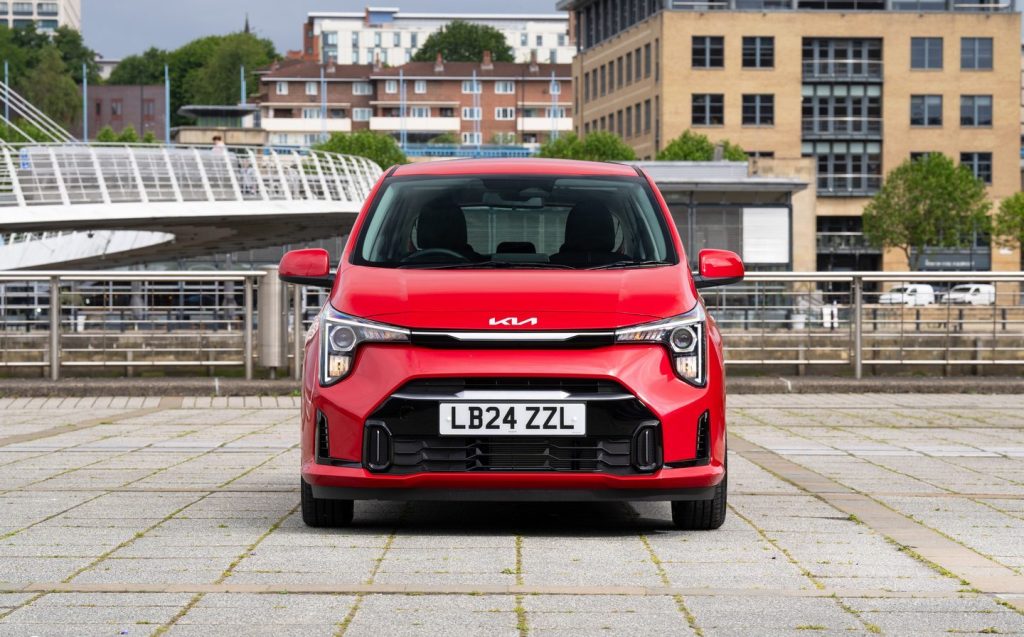
Anyone with an iPhone will tell you the words “new” and “technology” tend to precede a huge increase in price, and though the Picanto is not as cheap as it once was, Kia has managed to keep it competitive.
The car we tested was an entry-level “2” model (the “1” has apparently gone awol), and it came with a price tag of £15,595. And while you can do a lot with £15,000, it doesn’t go far in the new car market these days. The Fiat 500, for example, starts at nearly £17,000, and a Toyota Aygo X will set you back more than £16,000.
So, while the Picanto doesn’t sound that cheap, that has more to do with inflation than greediness on the part of the car dealers and manufacturers. In fact, the Picanto offers exceptional value because of the sheer amount of equipment Kia throws in as standard. As part of the update, the car now gets an 8in touchscreen with navigation, a reversing camera and rear parking sensors, as well as a digital instrument display and plenty of safety kit. It’s a pretty packed specification for an entry-level car.
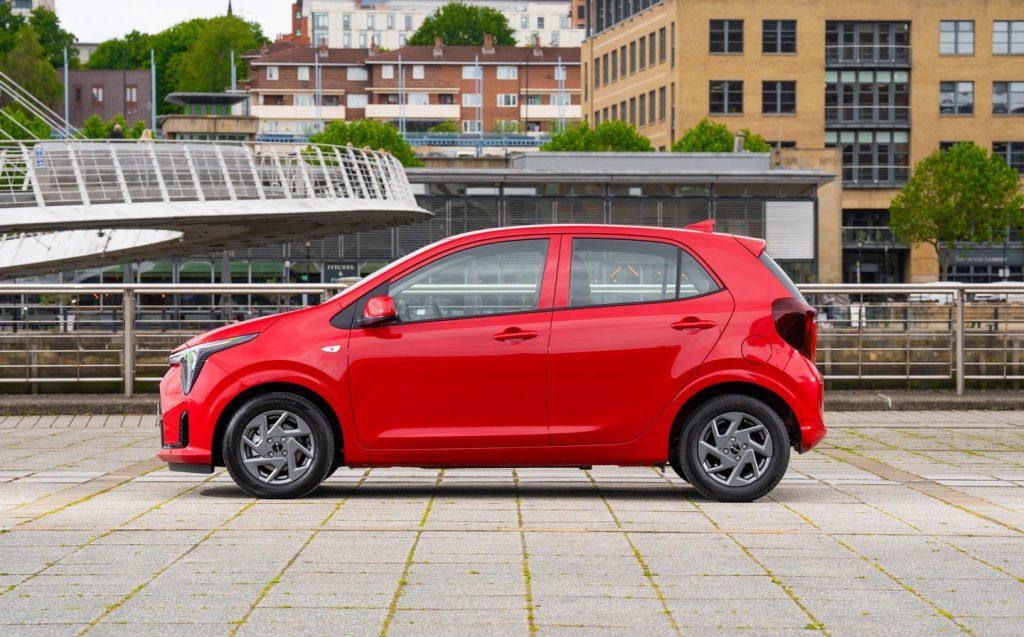
That means the Picanto really doesn’t feel like a cheap and cheerful car inside. The cabin design hasn’t changed all that much but the new touchscreen and digital instrument display, though basic by pricier car standards, make it feel decidedly more modern.
The screens don’t do anything too clever but both are clear and easy to use, with modern graphics and high-resolution displays, as well as a logical menu structure. So, not ground-breaking but a sterling lesson in functionality.
As is the way the cabin is made. The engineering on show is exemplary, which means all the panels fit alongside their neighbours neatly and nothing feels as though it’s about to fall off. Sure, some of the plastics are a bit cheap-to-touch in places but Kia must make some profit somewhere, and those plastics really aren’t all that common. Certainly, most of the things you come into contact with on a regular basis feel decent and solid.
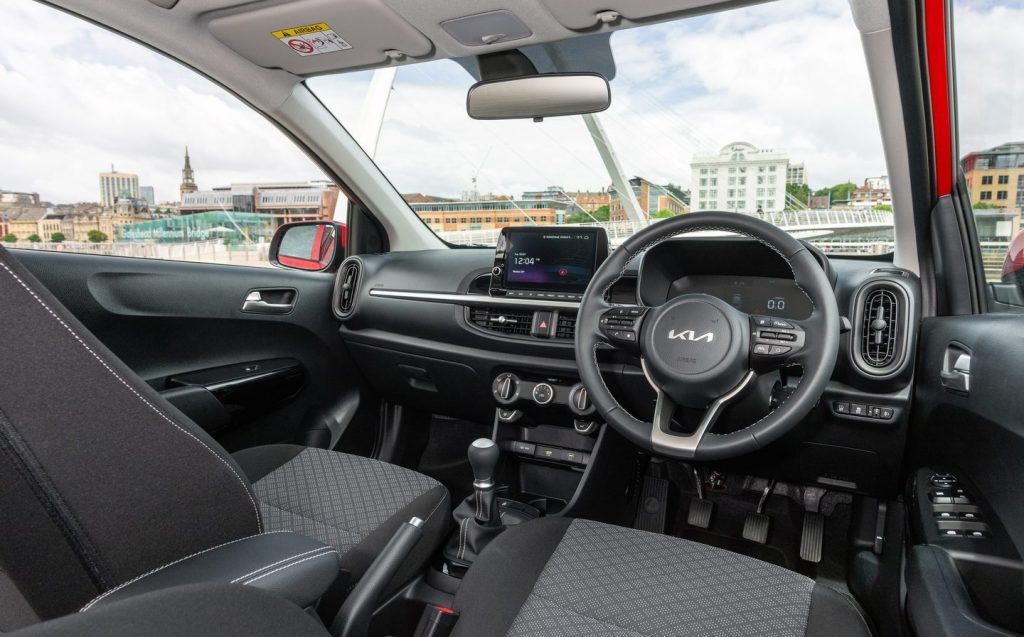
The materials are also more eco-friendly than before, thanks to the inclusion of artificial leather that replaces the real deal and keeps production emissions down, as well as Kia’s commitment to applying more bio-based materials to its vehicle cabins.
Kia has also aimed for greater comfort, giving the Picanto seats from its more upmarket models. It sounds like a strange comment to make, but a lot of city cars get cheaper seats than larger models in an effort to keep costs down. That means less adjustability and therefore a less comfortable seating position, but Kia’s decision to keep multi-way adjustment, albeit clunkier than its larger models, has made the Picanto a pleasant place to sit on a long journey.
And seat tech isn’t the only thing nicked from it’s bigger stablemates. The exterior design borrows heavily from the massive EV9 electric SUV, and though the two cars are hardly peas in a pod, the Picanto wears its fresh look well.
It looks chunkier than before, thanks to its new bumpers, while the lights give it a bit more modernity. There are some smart colours available, too.
Those are the only factory options available, mind you, with no other opportunity to add to the cars’ basic specifications.
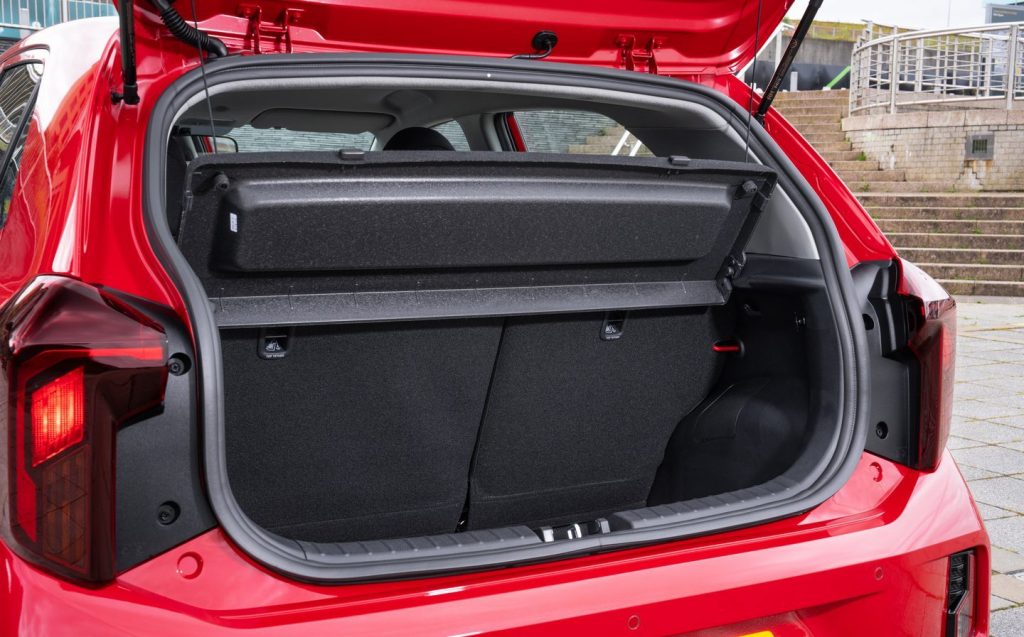
So far, then, so good, but sadly Kia couldn’t lift the cavernous boot from the EV9, so the Picanto is left with the same 255-litre luggage space as before. That’s kind of acceptable at this end of the market, and the inclusion of a false floor in the boot means you can fine-tune the space to your needs, but it’s hardly palatial in there.
The same goes for the rear seats, which are helpfully accessed via dedicated rear doors, but space inside is no more than acceptable. Kids will be fine but most adults will find it cramped.
But while practicality may not be the Picanto’s strong suit, it isn’t a weakness. Unfortunately, the same can’t be said of the engine range, which is where things unravel very slightly.
Kia is offering customers a choice of two engines: a basic 1-litre, three-cylinder unit for “2” and GT-Line models, and a fractionally more powerful 1.2-litre engine that’s fitted to the more upmarket “3” and GT-Line S versions.
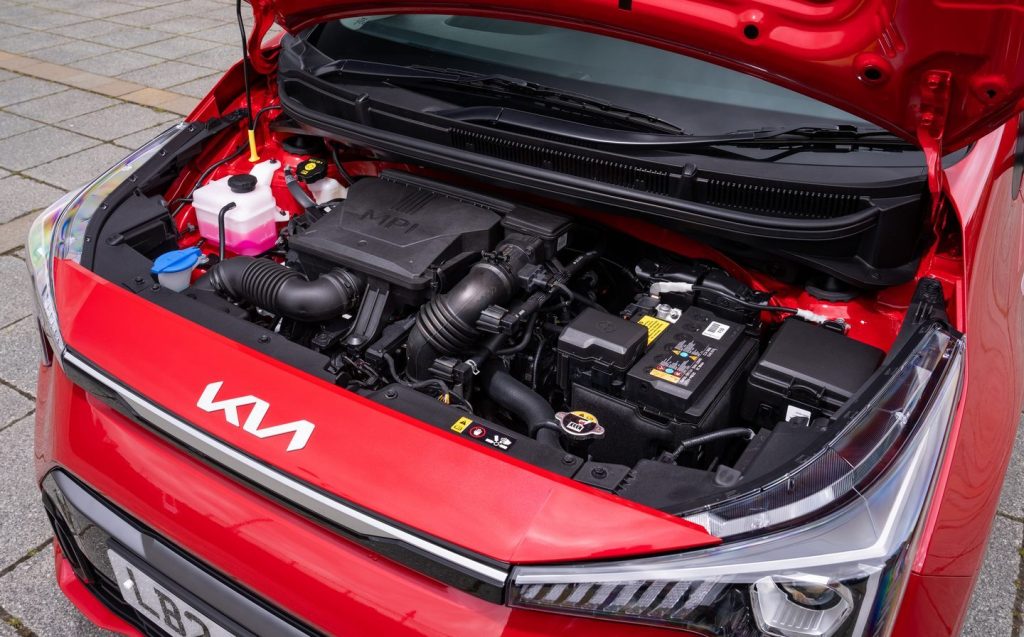
The basic 1-litre engine in the “2” model we tested has less power than a school supply teacher, with a mere 62bhp heading to the front wheels via the five-speed manual gearbox. The result is a woefully sluggish 0-62mph time of more than 15 seconds — pace that glaciers would call “leisurely” — and a top speed of 90mph. It’s an engine you need to punish just to get around.
The 1.2 is only a little better, with just 15bhp more at the disposal of your right foot.
That’s all good news for insurance premiums, but it’s less useful on hills, where the Picanto rapidly runs out of puff and changing down one or even two gear ratios is almost certainly necessary.
Fortunately, the gearbox is light and easy to use, so it’s not a deal-breaker.
And in fact, the whole car feels light and easy to use. That’s partly because the kerb weight of 985kg is tiny by modern car standards
What’s more, all the controls feel correspondingly undemanding. You can turn the steering wheel with one finger, and all the pedals feel feather-light under your feet. In short, it’s ideally suited to driving in traffic and manoeuvring in tight spaces.
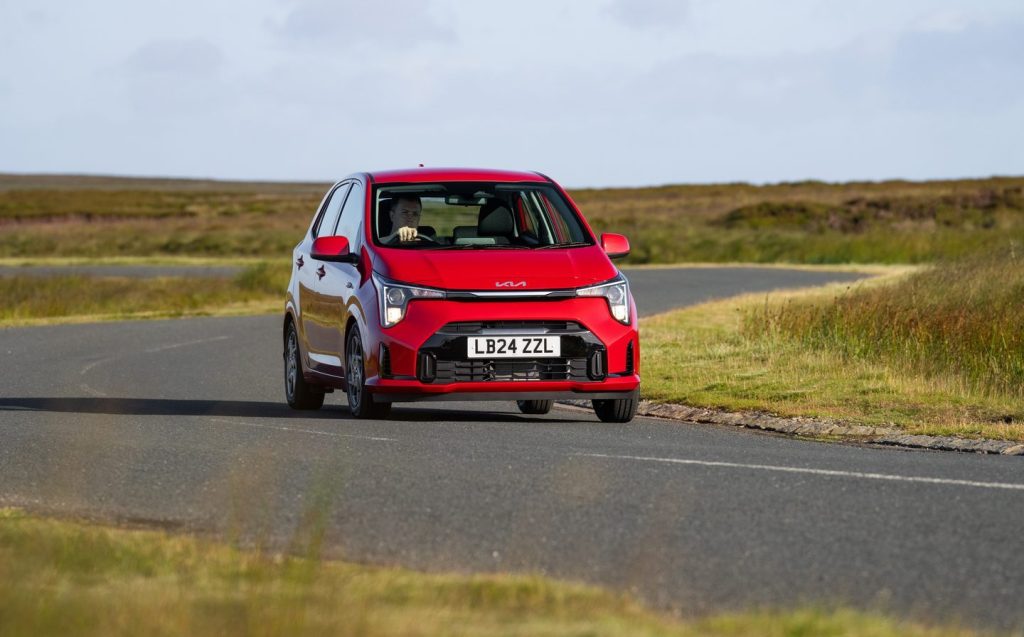
That won’t come as a surprise to many people, and we’d have been a bit disappointed if the Picanto wasn’t that way inclined, but the key to the outgoing car’s appeal was the amount of fun you could wring from it, and the new model is happily unchanged on that front. Wrong it’3s neck and the experience can be amusing.
Of course, the Picanto doesn’t drive all that well in the conventional sense, so we don’t envisage Porsche’s engineers having any sleepless nights. The tall body rolls quite a bit in corners and the power issues continue to prevent rapid progress, but there’s a simplistic charm to it all.
Though the controls feel light, the car is very responsive, thanks to it being as short as a postage stamp, and while the roll might scare you a bit if you chuck the car into a corner, the grip is still more than enough to see you around safely.
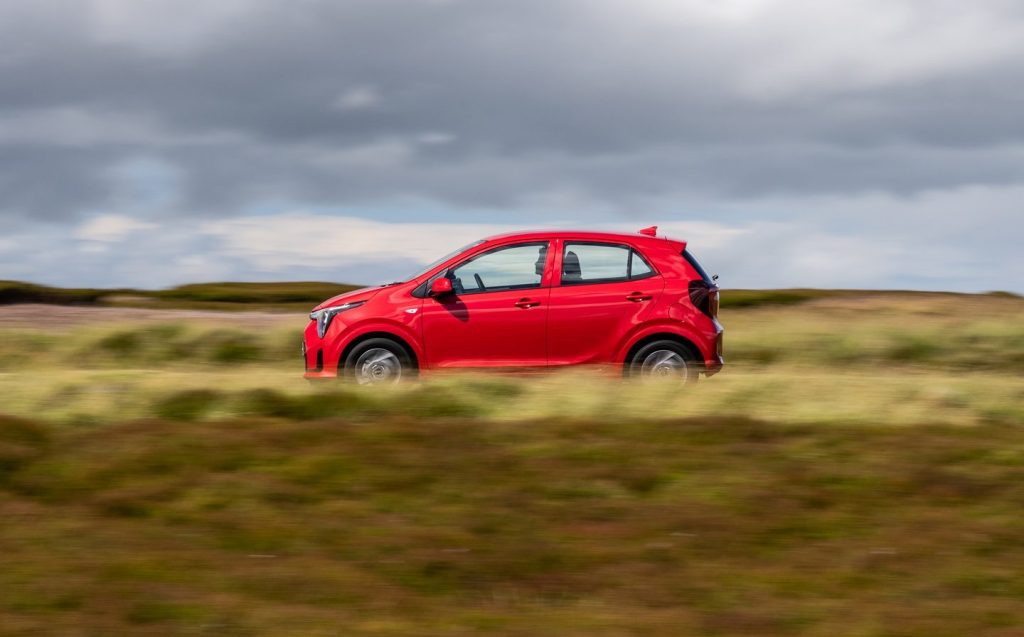
And because it isn’t that fast, the Picanto never feels too dangerous or licence-threatening. You can drive it at almost full chat almost all the time, and you know you won’t be bankrupted by speeding fines, which gives you this great sense of freedom and fun. Like the Mazda MX-5, the Picanto shows us and the world’s other car makers that cars don’t have to be fast to be rewarding. Skill is required to extract any kind of speed, and maintaining momentum around corners is the key to steady progress.
Naturally, this charm is largely made possible by the fact that it’s a featherweight, but that does come with some minor privations. The Picanto isn’t especially quiet at cruising speed and the lack of power means it feels a bit out of its depth on a motorway slip road.
Once you’re settled into a cruise things become more relaxed, and though small cars aren’t usually that comfortable the Picanto absorbs bumps quite well. It’s certainly more supple than a Fiat 500 in any environment, but particularly at motorway speeds.
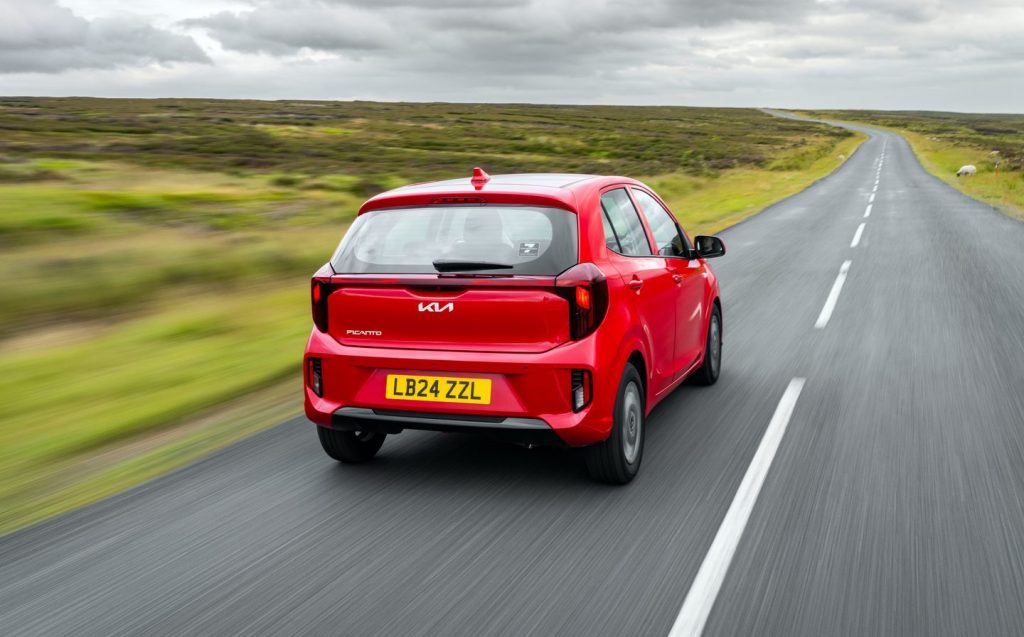
The real advantage of lightness, however, is fuel economy, and the Picanto treats petrol like a supermodel treats carbohydrates. It knows it really ought to ingest some at some point, but it really doesn’t want to.
Officially, the Picanto returns a respectable 54.3mpg but the trip computer in our test car showed well over 60mpg despite several pedal-to-the-metal moments on rolling English hillsides. Had we been driving in a more Greenpeace-friendly way, we’d probably have managed even better economy.
But the appeal of the Picanto is not in hypermiling. The driving experience might be a bit simple and old-school, and you might have to extract every morsel of strength from one of those distinctly low-powered engines, but the Picanto is guaranteed to make you smile.
It’s a car that doesn’t take itself too seriously but is still incredibly good at what it does, and now it’s a little easier to live with than ever before.
This combination gives the Picanto appeal that few cars can match and makes it one of the best small cars you can buy.
Related articles
- If you found our review of the updated Kia Picanto interesting, you might like to read our review of the Kia EV9
- Or catch up on all the car makers’ electric plans
- Have you read Jeremy Clarkson’s review of the Kia Sportage?
Latest articles
- Should I buy a diesel car in 2025?
- F1 2025 calendar and race reports: The new Formula One season as it happens
- Zeekr 7X AWD 2025 review: A fast, spacious and high tech premium SUV — but someone call the chassis chief
- Denza Z9GT 2025 review: Flawed but sleek 1,062bhp shooting brake from BYD’s luxury arm
- Extended test: 2024 Renault Scenic E-Tech review
- Best-selling cars 2025: The UK’s ten most popular models of the year so far
- Audi A6 Avant 2025 review: Trusty executive estate ticks expected boxes, and there’s still a diesel option
- Keir Starmer eases pressure on carmakers to sell EVs in response to ‘global economic headwinds’
- Ferrari 12Cilindri Spider review: Heady blend of traditional and futuristic becomes even more intoxicating after lid is removed


